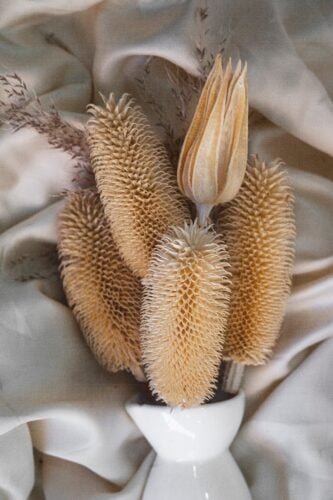In order to predict how harsh or mild the upcoming winter will be, individuals have turned to an unusual yet intriguing method: examining persimmon seeds. While modern weather forecasting relies heavily on sophisticated technology and scientific analysis, this ancient folk practice takes a simpler approach. By dissecting the seeds of persimmon fruits and observing their internal structures, it is believed that one can gain insight into the severity of the winter months ahead. This fascinating tradition has gained popularity in recent years, captivating the curiosity of weather enthusiasts and nature lovers alike. From rural communities to urban centers, the forecasting potential of persimmon seeds has become a well-known topic of conversation.
1. What are Persimmon Seeds?
1.1 Description
Persimmon seeds are small, hard-shelled seeds that can be found in the fruit of the persimmon tree. The persimmon tree is native to various regions around the world, including Asia, North America, and Europe. The seeds themselves are about the size of a pea and have a dark brown color. They are often discarded when consuming the fruit, but they hold valuable information when it comes to predicting winter weather.
1.2 Growth and Harvest
Persimmon trees typically start producing fruit after about five to six years of growth. The fruit matures in the autumn months and is ready for harvest from late September to November, depending on the region. The seeds are usually separated from the fruit pulp before consumption or processing. Harvesting persimmon seeds requires careful extraction to avoid damaging the seeds.
1.3 Historical Significance
Persimmon seeds have been used for centuries as a means of predicting winter weather patterns. This traditional forecasting method has been passed down through generations in various cultures. Their historical significance lies in their ability to provide a glimpse into the upcoming winter season, allowing communities to prepare accordingly.
2. Traditional Forecasting Methods
2.1 Weather Proverbs
One traditional method of predicting winter weather involves the use of weather proverbs. These are short, often rhyming sayings that have been passed down over time and are based on observations of the natural world. Weather proverbs can vary depending on the specific region and cultural beliefs. They provide a general indication of the expected weather conditions for the upcoming winter season.
2.2 Observational Clues
Observational clues, such as the behavior of animals, can also be used as a traditional forecasting method. For example, if squirrels are seen collecting and storing an abundance of nuts, it may indicate that a harsh winter lies ahead. Farmers and communities have relied on these observation-based clues for generations to make informed decisions regarding agricultural practices and winter preparations.
2.3 Seasonal Patterns
Traditional forecasting also takes into account seasonal patterns and recurring phenomena. By closely observing the timing of certain natural events, such as the migration of birds, the blooming of flowers, or the formation of ice on bodies of water, predictions can be made about the severity of the upcoming winter. These patterns have been carefully observed and recorded over time to establish correlations between natural occurrences and the weather.

3. The Persimmon Seed Forecasting Method
3.1 Origins
The use of persimmon seeds as a forecasting method has its origins in East Asia, particularly in Japan and China. The idea behind this method is based on the belief that the shape of the persimmon seed can indicate the type of winter weather to come. Over time, this method has spread to other regions around the world, where persimmon trees are grown.
3.2 Technique
The technique of persimmon seed forecasting involves examining the inner seed. When sliced in half, the persimmon seed reveals a white kernel with various shapes. These shapes are believed to represent different winter weather conditions. For example, a spoon shape is associated with heavy snowfall, while a knife shape suggests icy or cutting winds. By interpreting these shapes, predictions can be made about the severity and type of winter weather expected.
3.3 Accuracy
The accuracy of persimmon seed forecasting has been a topic of debate. While some people swear by its reliability, it should be noted that this method is not scientifically proven. The interpretation of the shapes within the persimmon seeds can vary, leading to different forecasts. Additionally, regional variations in climate may affect the accuracy of this method. Nonetheless, many people continue to rely on persimmon seed forecasting as a valuable tool in preparing for winter.
4. Collecting Persimmon Seeds
4.1 Finding Persimmon Trees
To collect persimmon seeds, one must first locate persimmon trees. These trees are typically found in temperate regions and thrive in well-drained soil. They can be grown in both urban and rural areas, making them accessible to a wide range of individuals. Before harvesting the seeds, ensure that you have permission to collect from the tree and be mindful of any local regulations or guidelines.
4.2 Harvesting the Seeds
Persimmon seeds are typically harvested in the late autumn when the fruit is ripe and ready to be consumed or processed. To harvest the seeds, gently remove the fruit from the tree by twisting it or cutting it with a knife. Carefully separate the seeds from the fruit pulp, ensuring that the seeds are undamaged and intact. Rinse the seeds with water to remove any remaining pulp before proceeding.
4.3 Storing the Seeds
Proper storage of persimmon seeds is essential to maintain their viability for forecasting purposes. Place the cleaned seeds in a dry, well-ventilated container, such as a paper bag or an airtight jar. Store the container in a cool, dark place, away from moisture and extreme temperatures. Persimmon seeds can be stored for several months and used for future forecasting or shared with others interested in this traditional practice.

5. Interpreting Persimmon Seeds
5.1 Identifying Seed Indicators
Interpreting persimmon seeds for winter weather forecasting involves identifying specific characteristics or shapes within the seed. These indicators are believed to correspond to different types of winter weather conditions. Common indicators include shapes resembling spoons, knives, forks, or plates. Each indicator is associated with a particular weather pattern, such as heavy snowfall, freezing temperatures, or mild conditions.
5.2 Translating Indicators to Forecast
Once the seed indicators have been identified, they can be translated into a winter weather forecast. For example, a spoon-shape indicator may indicate a winter with significant snowfall, while a plate-shaped indicator suggests a milder winter with fewer snowstorms. By examining the percentage of each indicator within a collection of persimmon seeds, a forecast can be derived.
5.3 Variations in Interpretation
It is important to note that the interpretation of persimmon seed indicators can vary among individuals and regions. Different cultural beliefs and personal experiences may influence the way these indicators are interpreted. Additionally, the accuracy of interpretation may be influenced by the quality of the seed collection and the expertise of the individual examining them. Therefore, it is advisable to consult multiple sources and experts to obtain a more comprehensive and reliable forecast.
6. Factors Influencing the Forecast
6.1 Local Climate
Local climate plays a significant role in shaping the accuracy of persimmon seed forecasting. Variations in temperature, moisture levels, and other climatic factors can impact the growth of persimmon trees and the development of their seeds. It is important to consider the specific characteristics of the local climate when interpreting persimmon seeds for winter weather forecasting.
6.2 Seed Characteristics
The characteristics of persimmon seeds themselves can also influence the accuracy of the forecast. Factors such as seed size, shape, and color may vary among different varieties of persimmon trees. These variations can affect the interpretation of the seed indicators and the resulting forecast. It is important to familiarize oneself with the specific characteristics of the persimmon seeds being used for forecasting.
6.3 Natural Phenomena
Natural phenomena, such as El Niño or the North Atlantic Oscillation, can have a significant impact on winter weather patterns. These larger-scale climatic events can override or influence the predictions made through persimmon seed forecasting. It is important to consider these natural phenomena alongside persimmon seed indicators to increase the accuracy of the winter weather forecast.

7. Comparisons with Modern Forecasting
7.1 Advantages of Persimmon Seed Forecasting
Persimmon seed forecasting offers several advantages compared to modern forecasting methods. It is a cost-effective and accessible technique, requiring minimal resources and equipment. It also connects individuals to their local environment and fosters a sense of community by involving people in the forecasting process. Furthermore, persimmon seed forecasting has cultural and historical significance, preserving traditional knowledge and practices.
7.2 Limitations in Accuracy
While persimmon seed forecasting has its merits, it is important to acknowledge its limitations. Unlike modern forecasting methods that rely on scientific models and data analysis, persimmon seed forecasting is based on interpretation and subjective judgment. This can lead to variations and inconsistencies in the forecast. Additionally, the accuracy of persimmon seed forecasting may be influenced by local climate conditions and seed characteristics, as mentioned earlier.
7.3 Integration with Modern Methods
To enhance the accuracy and reliability of winter weather forecasting, integrating persimmon seed forecasting with modern methods is recommended. By combining the historical knowledge of persimmon seed interpretation with the scientific advancements in weather prediction, a more comprehensive and robust forecast can be achieved. This integration can potentially provide people with a better understanding of upcoming winter weather patterns and improve their preparedness.
8. Folklore and Winter Forecasting
8.1 Cultural Beliefs
Folklore and cultural beliefs play a significant role in the practice of persimmon seed forecasting. These beliefs often stem from generations of observations, experiences, and stories passed down through communities. The cultural significance of this practice adds depth and richness to the forecasting method, making it more than just a scientific tool. It taps into the collective wisdom and shared experiences of a particular culture or region.
8.2 Regional Variations
Similar to other folklore practices, persimmon seed forecasting varies among different regions. Different cultures and communities may have their own unique interpretations of seed indicators and forecasting methods. Regional variations can arise due to varying climate conditions, historical developments, and cultural perspectives. Exploring these regional variations can provide valuable insights into the diverse ways in which people have understood and utilized persimmon seed forecasting throughout history.
8.3 Rituals and Practices
Folklore and winter forecasting often go hand in hand with rituals and practices. These rituals can involve specific ceremonies, gatherings, or even special recipes and meals. Engaging in these rituals serves not only as a way to prepare for winter but also as a way to foster a sense of community and shared purpose. The rituals and practices associated with persimmon seed forecasting provide a cultural and social context that enriches the entire experience.
9. Scientific Studies on Persimmon Seeds
9.1 Research Findings
Scientific studies have been conducted to explore the relationship between persimmon seeds and winter weather patterns. While the results are not definitive, they provide interesting insights into the potential correlations. Some studies have found a positive correlation between specific seed indicators and certain winter weather conditions. However, more research is needed to validate these findings and establish a more concrete scientific basis for persimmon seed forecasting.
9.2 Experimental Studies
Experimental studies have been conducted to investigate the accuracy of persimmon seed forecasting. These studies involve collecting and examining a significant number of persimmon seeds from various trees and regions. By carefully observing and documenting the seed indicators and subsequent winter weather conditions, researchers aim to validate and refine the forecasting method. These experimental studies contribute to the ongoing scientific exploration of persimmon seed forecasting.
9.3 Future Research Directions
The potential for future research on persimmon seed forecasting is vast. Further studies could focus on identifying the specific factors within persimmon seeds that correlate with winter weather patterns. This could involve analyzing the chemical composition, genetic variations, or growth patterns of the seeds. Additionally, more extensive experimental studies across diverse regions could provide valuable insights into the accuracy and reliability of persimmon seed forecasting.
10. Conclusion
Persimmon seed forecasting is a traditional method used to predict winter weather patterns. It involves examining the shapes within persimmon seeds to derive a forecast for the upcoming winter season. While not scientifically proven, this method has been passed down through generations and continues to be practiced in various regions around the world. Persimmon seed forecasting offers unique advantages such as its accessibility, cultural significance, and community involvement. However, it also has limitations in accuracy and can be influenced by local climate conditions and seed characteristics. Integrating modern forecasting methods with persimmon seed forecasting can enhance the reliability of the forecast. Further scientific studies and experimental research are needed to better understand the relationships between persimmon seeds and winter weather patterns. Overall, persimmon seed forecasting is a fascinating practice that blends science, folklore, and cultural traditions in our ongoing quest to understand and prepare for the winter season.
